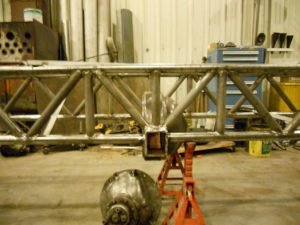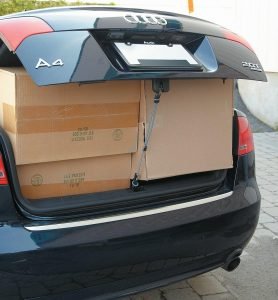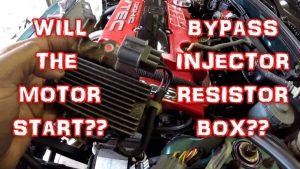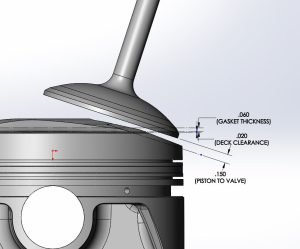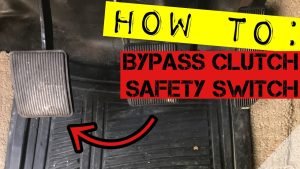
Contents
How to Jump a Fuel Pump Relay: A Step-by-Step Guide
Is your car refusing to start, and you suspect the fuel pump relay might be the culprit? Don’t panic! Jumping a fuel pump relay is a relatively simple troubleshooting step that can save you time and potentially costly repairs. This guide will walk you through the process, helping you diagnose the problem and get your car running again. Remember, safety is paramount. Always disconnect the negative battery terminal before starting any electrical work.
🛒 Recommended Product
What is a Fuel Pump Relay?
The fuel pump relay acts as a switch, controlling the power flow to your vehicle’s fuel pump. When the ignition is turned on, the relay receives a signal and activates, sending power to the pump. A faulty relay can prevent the pump from functioning, leaving your car unable to start. Jumping the relay temporarily bypasses the relay itself, allowing you to directly power the pump and see if it’s the source of the problem. This is a diagnostic test, not a permanent solution. If the pump works when jumped, the relay needs replacing.
Before You Begin:
- Consult your vehicle’s owner’s manual: This will pinpoint the location of your fuel pump relay. The location varies depending on the make and model of your car.
- Gather your tools: You’ll only need a jumper wire (a short piece of insulated wire with exposed ends) and potentially a test light to confirm power flow.
- Safety First: Always disconnect the negative battery terminal before working on any electrical components. This prevents accidental shorts and potential injury.
Step-by-Step Instructions on How to Jump a Fuel Pump Relay:
-
Locate the Fuel Pump Relay: Refer to your owner’s manual for the exact location. It’s typically found in the fuse box, under the hood or inside the cabin. The relay itself is often labeled or identifiable by its shape and size.
-
Identify the Relay: Once you’ve found the fuse box, locate the fuel pump relay. The owner’s manual will show you which one it is. Sometimes, the relay is marked or color-coded.
-
Remove the Relay: Carefully remove the fuel pump relay from its socket. Do not force it; it should slide out easily.
-
Prepare the Jumper Wire: Locate the two terminals on the relay that connect to the power supply. These are usually larger than the control terminals. Ensure that the jumper wire is of appropriate gauge for the load.
-
Jump the Relay: Using your jumper wire, connect one end to the terminal that normally receives power from the ignition circuit and the other end to the terminal that normally supplies power to the fuel pump. Consult your owner’s manual or a wiring diagram for precise terminal identification. Avoid touching the metal ends of the jumper wire together.
-
Turn the Ignition On: With the jumper wire connected, turn the ignition key to the “ON” position (do not crank the engine). Listen carefully for the sound of the fuel pump priming. You should hear a whirring sound for a few seconds. If you hear it, the fuel pump is working, and the problem likely lies with the relay.
-
Test with a Test Light (Optional): For further confirmation, you can use a test light. Touch one end to the positive terminal of the battery and the other to the fuel pump power terminal. If the light illuminates, power is reaching the terminal.
-
Turn the Ignition Off: Once you’ve confirmed the pump’s operation, turn the ignition off and remove the jumper wire.
-
Reinstall the Relay (and replace if necessary): Carefully return the fuel pump relay to its socket. If the relay is faulty, replace it with a new one of the correct amperage and specification.
Common Mistakes to Avoid:
- Incorrect Relay Identification: Make absolutely sure you’ve identified the correct relay. Jumping the wrong relay can cause damage to your vehicle’s electrical system.
- Using an Incorrect Jumper Wire: Ensure the wire is properly insulated and of sufficient gauge to handle the current draw of the fuel pump.
- Not Disconnecting the Battery: Failing to disconnect the negative battery terminal before working on electrical components can lead to serious injury or damage.
- Forgetting to Remove the Jumper Wire: Leaving the jumper wire connected could cause damage and drain your battery.
Important Note: Jumping the fuel pump relay is a temporary diagnostic step. If the relay is faulty, it must be replaced. If the fuel pump doesn’t work even when the relay is jumped, the problem might lie with the fuel pump itself, the wiring, or another component in the fuel system. In this case, professional help is recommended. This procedure does not resolve underlying electrical issues but will help identify the faulty component in your fuel system.
🛒 Recommended Product
FAQ
Q. What is a fuel pump relay, and why might I need to jump it?
A. A fuel pump relay is an electrical switch that controls the power to your vehicle’s fuel pump. Jumping it means bypassing the relay to directly power the pump, usually to diagnose a fuel delivery problem. You might need to jump it if your car won’t start and you suspect a faulty relay is preventing the fuel pump from operating. Note: This is a diagnostic step, not a permanent solution.
Q. How do I locate the fuel pump relay in my vehicle?
A. The location of the fuel pump relay varies greatly depending on the make, model, and year of your vehicle. Consult your vehicle’s owner’s manual for the specific location. Alternatively, you can often find this information online by searching for “[Your Vehicle Year, Make, and Model] fuel pump relay location.” The relay may be in the fuse box under the hood, in the cabin fuse box, or even in a separate relay center.
Q. What tools will I need to jump the fuel pump relay?
A. You’ll primarily need a wire with alligator clips on both ends, and a diagram showing the fuel pump relay’s location and wiring. A multimeter can also be helpful for verifying power and continuity. Safety glasses are recommended.
Q. What are the steps involved in jumping the fuel pump relay?
A. This process is vehicle-specific. First, locate the fuel pump relay and identify its power source and output terminals (this usually requires consulting a wiring diagram). Next, carefully disconnect the fuel pump relay. Connect one alligator clip of your jumper wire to the power source terminal of the relay socket (where the relay’s power normally connects). Connect the other alligator clip to the output terminal of the relay socket (where the relay normally sends power to the fuel pump). Caution: Only do this for brief periods and with the ignition switched on. Observe if the fuel pump runs.
Q. What safety precautions should I take when jumping a fuel pump relay?
A. Always disconnect the negative terminal of your car battery before working with any electrical components. Never work on a vehicle with the engine running. Be mindful of sparks and hot surfaces. Wear safety glasses to protect your eyes. Fuel is flammable, so be cautious when working near the fuel tank and fuel lines. Only attempt this if you have a basic understanding of automotive electrical systems or are under the guidance of someone experienced. Incorrectly jumping the relay can potentially damage your vehicle’s electrical system.
Q. What should I do if the fuel pump still doesn’t run after jumping the relay?
A. If the fuel pump doesn’t run after jumping the relay, the problem likely lies elsewhere in the fuel delivery system, such as a blown fuse, faulty fuel pump, wiring problems, or a fuel pump control module issue. You should consult a qualified mechanic for further diagnosis and repair.
Q. Is jumping the fuel pump relay a permanent solution?
A. No, jumping the fuel pump relay is a diagnostic test to determine if the relay is the problem. If the pump runs when the relay is bypassed, the relay needs replacing. If the pump still does not work, the problem lies elsewhere and needs professional attention. Continuously running the pump via a jumper wire is dangerous and can damage the pump itself.
Related Articles
How to Tell If Fuel Pump Is Bad
How to Tell If Your Fuel Pump Is Bad: A Comprehensive Guide Is your car sputtering, hesitating, or refusing to start? A failing fuel pump could be the…
How to Check Fuel Pump
How to Check Your Fuel Pump: A Step-by-Step Guide Is your car struggling to start, sputtering, or lacking power? A faulty fuel pump could be the culpr…
How to Test Fuel Pump
How to Test a Fuel Pump: A Step-by-Step Guide Is your car struggling to start, sputtering, or lacking power? A faulty fuel pump could be the culprit. …
Affiliate Disclosure: As an Amazon Associate, I earn from qualifying purchases made through links on this site.



